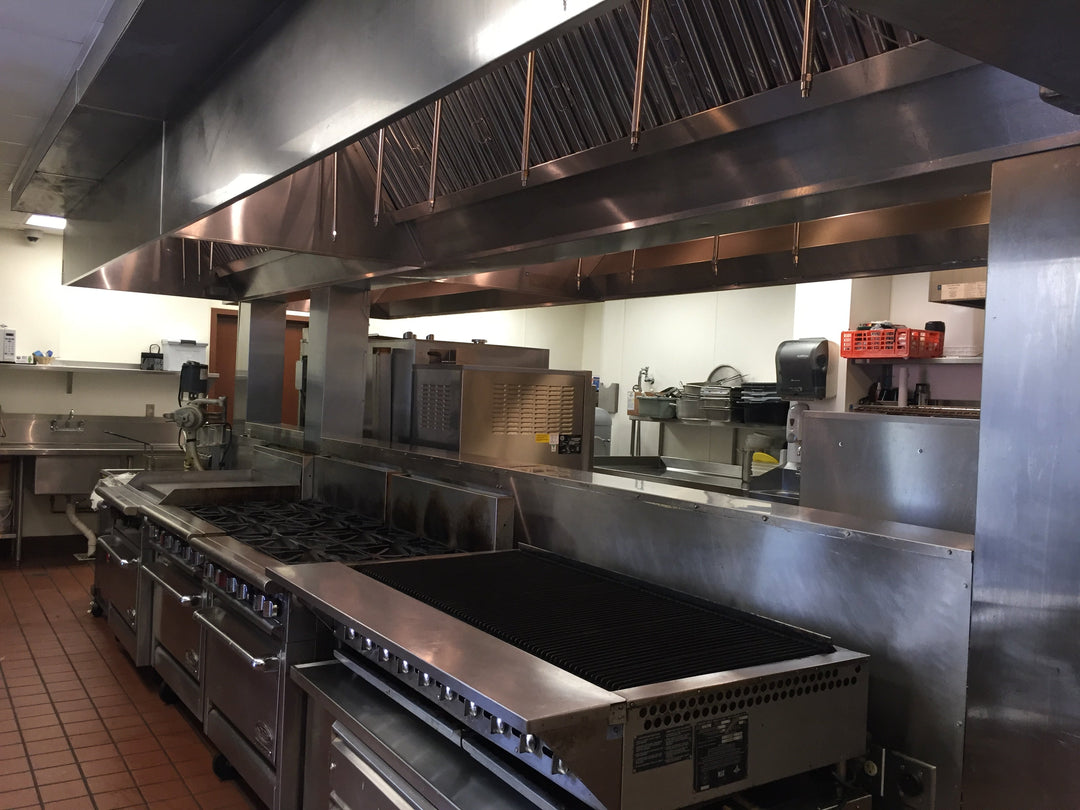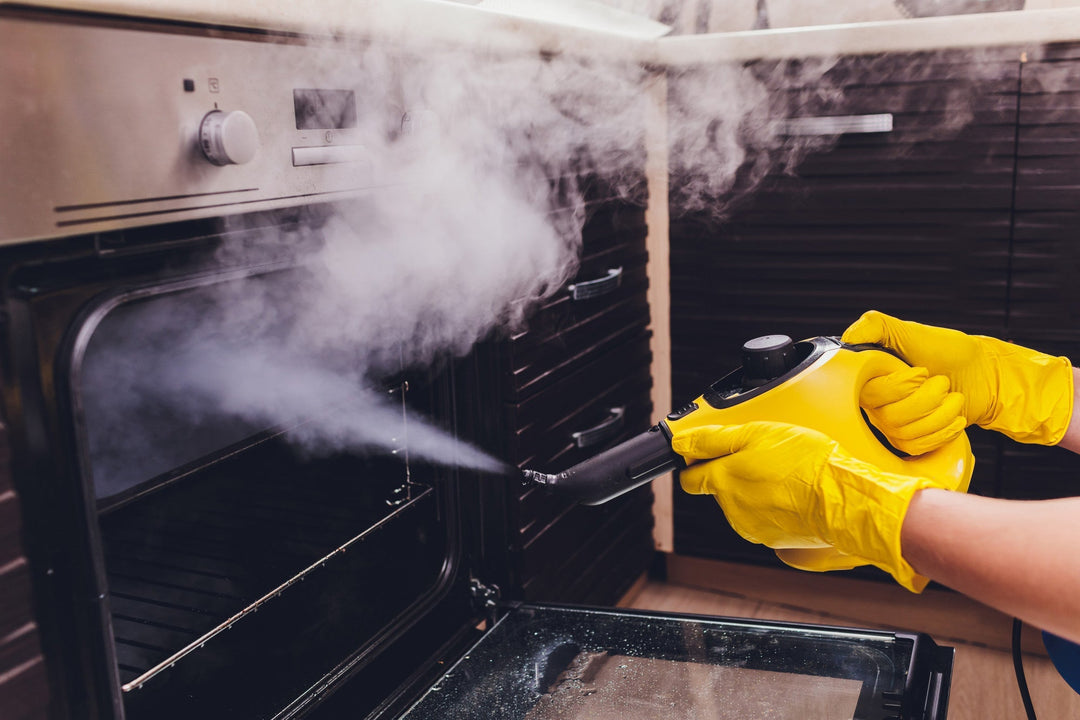Quiet Efficiency: How to Reduce Noise While Maximizing Exhaust Performance

Your vehicle's exhaust system plays a crucial role in performance, efficiency, and environmental impact. Think of it as your car's respiratory system - it needs to breathe efficiently while maintaining acceptable noise levels.
A well-designed exhaust system consists of several key components:
- Exhaust Manifold: Collects gases from engine cylinders
- Catalytic Converter: Reduces harmful emissions
- Resonator: Fine-tunes sound frequencies
- Muffler: Controls noise levels
- Tailpipe: Directs gases away from the vehicle
The challenge lies in striking the perfect balance between noise reduction and performance optimization. A restrictive exhaust system might keep things quiet but can strangle your engine's power output. On the flip side, a system focused solely on performance might create unacceptable noise levels.
Modern exhaust systems have evolved beyond simple pipes and mufflers. They're engineered to:
- Maximize horsepower and torque
- Improve fuel efficiency
- Reduce environmental impact
- Control noise pollution
- Enhance engine longevity
Whether you're looking to upgrade your vehicle's exhaust system or maintain your current setup, understanding this balance between quiet efficiency and performance is essential.
For those considering a career in automotive trades, it's worth noting that trade schools are bridging America's skills gap. These institutions offer hands-on experiences and training programs that empower students to excel in various fields, including exhaust system maintenance and optimization.
If you're interested in pursuing such courses, you can easily build your wishlist for your preferred courses and certifications at MFS Trade School. They even provide specialized packages like the Gold Package for Kitchen Exhaust Hood Cleaning, which includes all major equipment needed to start your own business in that sector.
Moreover, maintaining an exhaust system is crucial for its longevity and efficiency. To ensure optimal performance year-round, it's essential to follow certain seasonal maintenance tips for kitchen exhaust systems. Understanding these practices not only helps in keeping the system running efficiently but also ensures safety.
Lastly, when it comes to kitchen hood cleaning, there are several myths that need debunking to understand the facts behind proper maintenance and safety procedures.

The Role of Exhaust System in Vehicle Performance
Your vehicle's exhaust system acts as a vital respiratory system, directing harmful gases away from the engine while maintaining optimal performance. This complex network of components works tirelessly to ensure your engine breathes efficiently and performs at its peak.
Channeling Combustion Byproducts
The exhaust system removes these key byproducts from your engine:
- Carbon monoxide
- Nitrogen oxides
- Unburned hydrocarbons
- Water vapor
- Particulate matter
Without proper exhaust flow, these gases can accumulate and create dangerous conditions for both your engine and passengers.
Back Pressure Management
Back pressure plays a critical role in your engine's performance. Too much back pressure:
- Reduces horsepower
- Decreases fuel efficiency
- Causes engine overheating
- Increases wear on engine components
The right amount of back pressure helps maintain proper exhaust velocity and scavenging effects, creating the perfect balance for optimal engine performance.
Performance and Efficiency Impact
A well-designed exhaust system directly influences:
- Power Output: Efficient exhaust flow allows your engine to breathe better, resulting in increased horsepower and torque
- Fuel Economy: Proper exhaust management reduces the energy needed to expel gases, improving fuel efficiency
- Engine Temperature: Quick removal of hot exhaust gases helps maintain ideal operating temperatures
- Engine Longevity: Reduced strain on engine components leads to extended engine life
Commercial Applications
In commercial settings like restaurant kitchens, exhaust systems follow strict NFPA 96 guidelines to ensure proper ventilation and safety. These systems require regular hood cleaning to maintain optimal performance and comply with safety regulations. For instance, exhaust hood cleaning is crucial for maintaining the efficiency of these systems.
Moreover, in such environments where cooking oil is extensively used, understanding cooking oil filtration becomes essential. This knowledge can significantly impact a restaurant's profitability and overall dining experience.
In summary, your exhaust system's efficiency directly impacts your vehicle's performance, making it essential to maintain proper function through regular inspections and timely maintenance.
Noise Reduction in Exhaust Systems
A well-designed exhaust system employs strategic components to minimize noise while maintaining optimal performance. The muffler serves as the primary noise reduction device, using a series of chambers and baffles to dissipate sound waves generated by the engine's combustion process.
How Mufflers Work
Mufflers work through three main mechanisms:
- Absorption: Sound-dampening materials like fiberglass or steel wool absorb high-frequency noise
- Reflection: Internal chambers create opposing sound waves that cancel each other out
- Restriction: Carefully designed passages slow down exhaust gases to reduce noise levels
The Role of Resonators
The resonator acts as a supplementary noise control device, working in harmony with the muffler. It targets specific frequencies that the muffler might miss, creating a more refined sound profile. Resonators use tuned chambers to:
- Eliminate drone at cruising speeds
- Reduce high-pitched whining
- Create a deeper, more pleasant exhaust note
Achieving effective noise control requires precise engineering to maintain exhaust flow efficiency. Modern systems incorporate:
- Variable valve technology: Adjusts exhaust flow based on engine load
- Helmholtz resonators: Target specific problematic frequencies
- Multi-chamber designs: Create multiple paths for exhaust gases
Performance-oriented vehicles often utilize active noise control systems, allowing drivers to adjust exhaust sound levels based on driving conditions. These systems incorporate:
- Electronic valves
- Sound actuators
- Multiple flow paths
The placement and design of these components significantly impact their effectiveness. Manufacturers position resonators and mufflers at strategic points along the exhaust system to maximize noise reduction while minimizing restrictions to exhaust flow.
High-performance mufflers often feature:
- Straight-through designs
- Large-diameter piping
- High-flow materials
These elements work together to create an exhaust system that maintains optimal back pressure while keeping noise levels within acceptable limits.
In addition to these technical aspects, maintaining cleanliness in areas such as restaurants where kitchen exhaust hoods are used is essential. Restaurant cleanliness plays a vital role in ensuring the health and safety of customers. Health inspectors evaluate restaurants based on strict cleanliness standards which include the maintenance of kitchen exhaust hoods.
For those in the hood cleaning business, there are strategies available that can help transform a hood cleaning business in just one year. Utilizing effective products like an all-purpose freezer cleaner, which is effective down to -20°F and ideal for walk-in freezers, can greatly assist in maintaining cleanliness without rinsing.

Environmental Protection with Catalytic Converters
The catalytic converter is a crucial component in reducing harmful emissions from vehicles. It works by converting toxic gases produced during combustion into less harmful substances through a complex chemical process known as catalysis.
Chemical Conversion Process
The catalytic converter performs three main conversions:
- Carbon monoxide (CO) is converted into carbon dioxide (CO2)
- Hydrocarbons (HC) are broken down into water vapor (H2O) and carbon dioxide (CO2)
- Nitrogen oxides (NOx) are decomposed into nitrogen (N2) and oxygen (O2)
How Catalytic Converters Work
Inside the catalytic converter, there are precious metals such as platinum, palladium, and rhodium. These metals act as catalysts, speeding up the chemical reactions without being used up in the process. The converter has a honeycomb structure that provides a large surface area for the exhaust gases to come into contact with the catalysts, ensuring efficient conversion of pollutants.
Factors Affecting Catalytic Converter Performance
Several factors influence how well a catalytic converter functions:
- Operating temperature: The converter needs to reach a temperature between 300-600°C (572-1112°F) for optimal performance.
- Conversion efficiency: When working correctly, the converter can achieve an efficiency rate of 90-95%.
- Lifespan: Under normal conditions, a catalytic converter can last anywhere from 70,000 to 100,000 miles.
Importance of Regular Maintenance
To ensure that the catalytic converter continues to work effectively, regular maintenance is essential. Here are some signs that may indicate a problem with the converter:
- Decreased fuel efficiency
- Failed emissions tests
- Rough engine idle
- Sulfur-like smell coming from the exhaust
- Activation of the check engine light
Positioning of Catalytic Converters
The placement of catalytic converters in the exhaust system plays a role in both controlling emissions and reducing noise. Typically, they are installed between the engine and muffler. This positioning not only helps in minimizing sound but also allows them to perform their primary function of protecting the environment.
Common Issues with Catalytic Converters
There are several problems that can occur with catalytic converters:
- Physical damage caused by road debris
- Internal contamination due to rich fuel mixtures
- Thermal shock resulting from sudden changes in temperature
- Poisoning caused by leaded fuel or oil additives
Advancements in Modern Catalytic Converters
Manufacturers have made significant improvements to catalytic converters to meet both environmental regulations and performance requirements. High-flow catalytic converters are now being produced, which maintain emission control while reducing exhaust restriction. This development benefits both the environment and engine efficiency. However, researchers are also exploring alternatives that could potentially be [better than traditional catalytic converters](https://today.uconn.edu/2016/01/better-than-a-catalytic-converter-a-new-tool-for-em
Maintenance and Upgrades for Optimal Performance
Regular maintenance inspections serve as your first line of defense against exhaust system issues. Much like the equipment maintenance crucial for cleaning businesses, a well-maintained exhaust system exhibits specific signs of optimal performance:
- Consistent Engine Sound: A healthy exhaust produces a steady, smooth sound without rattling or excessive noise
- Normal Fuel Consumption: Efficient systems maintain standard fuel economy levels
- Clean Exhaust Tips: Clear, soot-free exhaust tips indicate proper combustion
Performance upgrades can transform your vehicle's capabilities while maintaining noise control. High-performance components offer substantial benefits:
Power Enhancements
- Larger diameter pipes increase exhaust flow
- High-flow catalytic converters reduce restrictions
- Performance headers optimize scavenging effect
- Mandrel-bent pipes minimize flow resistance
Strategic Upgrade Options
- Cat-back systems: Replace everything after the catalytic converter
- Axle-back modifications: Focus on the rear section for sound tuning
- Header-back installations: Complete system overhaul for maximum gains
Your upgrade path depends on your specific goals. A performance-focused build might prioritize:
- Straight-through muffler designs
- Larger diameter piping
- Free-flowing catalytic converters
Noise-conscious builds can incorporate:
- Chambered mufflers
- Resonator additions
- Sound-dampening materials
Professional installation ensures proper fitment and optimal performance. Regular checks of mounting brackets, gaskets, and connections prevent unwanted vibrations and maintain system integrity.
High-quality aftermarket components from reputable manufacturers provide the best balance of performance gains and noise control. These parts often feature advanced engineering that surpasses OEM specifications while maintaining acceptable sound levels.
For those interested in further enhancing their skills in maintenance and upgrades, MFS Trade School offers comprehensive training and certification programs in the restaurant cleaning and maintenance industry.

Manufacturing Considerations for Noise Control
The selection of materials plays a crucial role in exhaust system performance and noise control. Stainless steel stands out as the preferred material choice due to its exceptional durability and acoustic properties. Here's why stainless steel excels in exhaust system manufacturing:
Type 304 Stainless Steel
- Resists corrosion from exhaust gases
- Maintains structural integrity under high temperatures
- Provides natural sound dampening properties
- Offers extended service life compared to mild steel
Type 316 Stainless Steel
- Enhanced resistance to chemical corrosion
- Superior performance in harsh environments
- Ideal for marine applications
- Premium choice for high-performance vehicles
Custom fabrication techniques have revolutionized exhaust system manufacturing. Modern manufacturers employ advanced methods to create systems that balance noise reduction with optimal performance. For instance, they might use custom video reviews to showcase their unique fabrication techniques or share customer experiences with these custom solutions.
Key Custom Fabrication Techniques Used in Exhaust System Manufacturing
- Mandrel Bending
- Precision Welding Techniques
- Advanced Design Features
Mandrel Bending
- Maintains consistent pipe diameter through bends
- Reduces turbulence and flow restrictions
- Creates smoother sound characteristics
- Minimizes performance losses
Precision Welding Techniques
- TIG welding for superior joint strength
- Robotically controlled welds for consistency
- Reinforced seams for better vibration control
- Enhanced structural integrity
Advanced Design Features
- Variable wall thickness for targeted noise reduction
- Engineered chamber designs for sound wave cancellation
- Strategic placement of sound-absorbing materials
- Computer-aided design for optimal flow dynamics
The manufacturing process integrates acoustic engineering principles with material science. Manufacturers use specialized testing equipment to measure sound levels and flow characteristics throughout production. This data-driven approach ensures each exhaust system meets specific performance requirements while maintaining effective noise control.
Additionally, it is beneficial for manufacturers to maintain a custom photo gallery showcasing their work. Such galleries can provide impactful business imagery that elevates marketing efforts and creates captivating content.
Kitchen Exhaust Systems: A Case Study in Balancing Noise and Performance
Kitchen exhaust systems present unique engineering challenges that test the limits of noise reduction and performance optimization. Commercial kitchen environments demand robust ventilation solutions capable of handling intense heat, grease-laden vapors, and constant operation.
Space Constraints and Heat Management
- Limited ceiling space requires compact yet powerful kitchen exhaust hoods
- High-temperature cooking operations generate extreme heat levels
- Multiple cooking stations demand strategic airflow distribution
- Building code requirements restrict design flexibility
Professional kitchen exhaust system designers employ several innovative strategies to address these challenges:
Advanced Hood Design Features
- Variable-speed fans adjust automatically to cooking intensity
- Perimeter capture systems enhance efficiency while reducing noise
- Sound-dampening materials integrated into hood construction
- Strategic placement of baffles and filters for optimal airflow
Modern kitchen exhaust systems incorporate cutting-edge technologies to balance performance with noise reduction:
Innovative Solutions
- UV Technology: Breaks down grease particles while reducing system strain
- Smart Controls: Monitor and adjust ventilation based on real-time needs
- Hybrid Filtration: Combines multiple filter types for enhanced performance
- Aerodynamic Design: Reduces turbulence and associated noise
Leading manufacturers have developed specialized hood designs that demonstrate exceptional noise control:
Performance-Optimized Features
- Double-shell hood construction creates natural sound barriers
- Precision-engineered air curtains minimize escape of cooking vapors
- Integrated makeup air systems reduce draft and improve efficiency
- Sound-attenuating ductwork reduces noise transmission
These advancements in kitchen exhaust technology showcase the industry's ability to meet demanding performance requirements while maintaining acceptable noise levels. However, it's crucial to remember that maintaining these systems is just as important as their initial installation. Regular kitchen exhaust cleaning can significantly improve health ratings and ensure compliance with health department standards.
Moreover, effective hood cleaning strategies play a vital role in preventing fire hazards in commercial kitchens. As we continue to push boundaries in both efficiency and acoustic management in kitchen ventilation systems, we must also prioritize safety through proper maintenance practices.
In addition, it's important to consider the odor control aspect of kitchen exhaust systems. Proper management of odor emissions not only improves the working environment but also helps in maintaining good relations with neighboring establishments by minimizing nuisance complaints.
Regulatory Standards and Best Practices for Exhaust System Design
Commercial kitchen exhaust systems must adhere to strict regulatory standards to ensure safety, efficiency, and optimal performance. The National Fire Protection Association (NFPA) 96 standard serves as the primary guideline for commercial kitchen hood systems and exhaust fans.
Key NFPA 96 Requirements:
- Minimum clearance of 18 inches between hood systems and combustible materials
- Regular inspection and cleaning schedules based on cooking volume
- Specific requirements for hood construction materials and fire suppression systems
- Detailed guidelines for grease removal device installation and maintenance
Additional Regulatory Standards:
- International Mechanical Code (IMC)
- Uniform Mechanical Code (UMC)
- Local health department regulations
- State-specific building codes
Commercial kitchen exhaust hood design must incorporate specific features to meet these standards:
- Ventilation Rates
- Proper air velocity calculations
- Adequate makeup air provisions
- Balanced air distribution
- Material Requirements
- Stainless steel construction
- Welded seams and joints
- Grease-tight connections
- Safety Features
- Fire suppression systems
- Temperature sensors
- Emergency shutdown controls
Best Practices for Compliance:
- Install UL-listed commercial exhaust fans
- Implement regular kitchen exhaust hood cleaning schedules
- Document all maintenance and inspections
- Train staff on proper system operation, including advanced virus disinfection techniques for commercial kitchens which are crucial in maintaining public health
- Partner with certified hood cleaning services that offer professional kitchen exhaust hood cleaning
Professional kitchen hood vent installations require careful attention to both performance and noise control. Commercial kitchen hood system designs must balance these requirements while maintaining compliance with all applicable codes. Regular maintenance, including professional kitchen exhaust hood cleaning, ensures continued adherence to standards and optimal system performance.
To facilitate this process, utilizing effective hood degreaser solutions can significantly enhance the efficiency of cleaning routines.
Conclusion
Balancing noise reduction with exhaust system efficiency is crucial in both automotive and commercial kitchen applications. The design phase is the best time to address these two requirements, as retrofitting solutions are often expensive and less effective.
A well-designed exhaust system delivers:
- Enhanced Performance: Proper airflow management and reduced back pressure
- Noise Control: Strategic placement of mufflers and resonators
- Environmental Compliance: Integration of emission control components
- Safety Standards: Adherence to regulatory requirements
Your exhaust system needs attention and investment. When selecting or upgrading your system:
- Research available noise reduction technologies
- Consider the specific requirements of your application
- Consult with qualified professionals
- Factor in long-term maintenance needs
- Prioritize both performance and noise control equally
The key to achieving quiet efficiency lies in making informed decisions about your exhaust system. Take action today - evaluate your current setup, identify areas for improvement, and implement solutions that align with your performance goals while keeping noise levels acceptable. Your investment in a balanced exhaust system will result in better operation, lower maintenance costs, and improved environmental compliance.
Remember: A quiet exhaust system doesn't mean sacrificing performance - it means achieving optimal efficiency through smart design and proper maintenance.
If you're considering a career that can help you understand these systems better, MFS Trade School offers programs that could provide valuable insights and training in this field.






